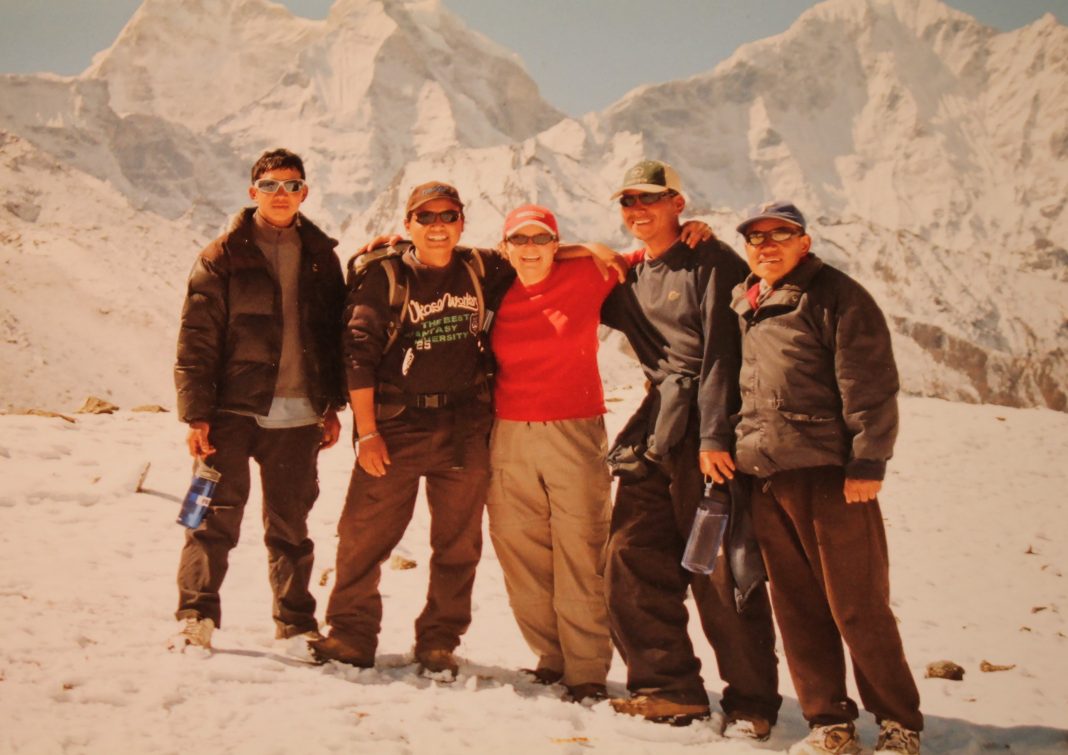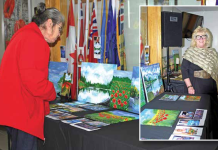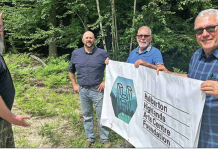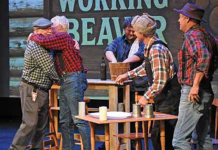I am slowly, steadily making my way along the Everest Base Camp trek when Nic, who is trudging behind me, suddenly gasps for air.
Her panicked partner, Paul calls out to our Nepalese guides. They rush to Nic’s side, along with Brisbane doctor, Simon Arndil.
They examine Nic and find she is now okay. Nic tells them she had a stomach cramp and simply lost her breath – not hard to do at nearly five kilometres up with about half the oxygen at sea level.
As Nic struggled, I felt panic overcome me. My vision seemed to shimmer and for the first time, I realized how dangerous trekking at altitude can be.
I forced myself to calm down . . . breathe in through my nose, breathe out through my mouth.
We all began to walk again, towards Lobuche, where our camp that night would be pitched at 4,930 m amongst the Khumbu Glacier moraine.
Yeti Airlines
On our Yeti Airlines flight from Kathmandu to Lukla, where the trek begins, our stewardess offers us a mint and cotton for our ears as the small, twin propeller aircraft takes off, providing amazing views of the Eastern Himalaya. We experience a rather hairy landing on a very short airstrip at 2,800 metres and are awe-inspired by the huge, snow-capped peaks surrounding the village.
We are soon joined by throngs of people along a well-marked trail; local porters and dzopkos (a yak-cow crossbreed) carrying supplies for the villages higher up and trekking parties.
We head downhill, passing Buddhist stupas, chortens, prayer flags and prayer wheels, through villages with pretty stone houses and flowers, shops and terraced fields of potatoes and buckwheat. We come to a suspension bridge and make the first of many crossings of the Dudh Kosi, a raging river that flows from the highest peaks.
The trek
Our Nepalese guides wake us up early by bringing tea to our tents, followed by a hot bowl of washing water. We pack and head to our mess tent for breakfast. We then walk for a few hours before a hearty lunch and a few more hours’ walking before we are back in the mess tent for afternoon tea, followed by another wash and then dinner. Most nights we are tucked up in bed early after a vigorous day’s walking.
The pace is slow and steady as we make our way up. We are advised that the best way to avoid altitude sickness is to go slow and to drink plenty of liquids, hot liquids preferably, and we endeavour to drink three litres a day even though it means we rarely sleep through the night as we need to get up and use the toilet.
We hike through pine forest and cleared areas reveal terraced fields and a variety of crops, while spectacular mountain peaks unfold above us and seem to hover above the tree-line as they rise above the deep river valley. We pass Mani Walls, carved with “Om Mani Padme Hum” (Hail to the jewel in the lotus).
Namche Bazaar
“No, they don’t have cars,” the woman with the New Zealand accent explains via mobile phone to someone on the other end of the world.
However, they do appear to have internet everywhere. In fact, I send an e-mail from Gorak Shep, at 5,288m, where the proprietor of the internet café uses a petrol generator and satellite dish to ensure communication with the outside world.
At Namche Bazaar, we run into Willie Benegas, an Argentinian living in the USA who is a professional Mt. Everest guide. Willie has climbed Everest eight times and this season will make his ninth attempt.
We ask him about the danger and he shrugs it off saying: “Flying into Lukla is extremely dangerous. You’re playing the odds all the time.”
He concedes the commercialization of Everest but believes it is the low budget expeditions that account for the accidents.
We wind our way up to Thyangboche Monastery where we arrive in time for the Buddhist monks’ afternoon chant. The light is dim and there is a rank smell of trekkers’ socks but the deep, melodic chant invades my chest.
At Dingboche, at 4,360m, the snow arrives with a vengeance, covering our tents. Our Nepalese guides thwack the sides to knock the snow off as we huddle for warmth in the mess tent, only venturing out to the toilet tent. We are now getting just 60 per cent of the oxygen we would at sea level. We are losing our appetites, not digesting our food or sleeping very well. The conversation in the mess tent inevitably turns to altitude sickness. There are now eight people on Diamox, a drug used to treat acute mountain sickness. We retire to sleep, our sleeping bags crunching on the snow and ice. The nights are about -20C. I am wearing just about everything I have packed but still shiver. I can’t get my feet warm.
At Gorak Shep we find a tiny village teahouse, where we gather around a potbelly stove and enjoy steaming cups of hot chocolate. Outside the snow continues to fall, covering everything, including the yaks. Tomorrow is the big day.
Everest Base Camp
We awake to 360 degree views of snowcapped mountains: Everest, Lhotse, Nuptse, Tawatse, Ama Dablam, Kantega and Thamserku, Khumblia and Kongde Ri.
We set off early, the Khumbu Glacier to our right as we slowly ascend and descend over rocky terrain.
Hour after hour, I concentrate on walking slowly and steadily, breathing in through my nose and out through my mouth, and carefully placing each step, only glancing up occasionally to see Everest poking her head through her sister mountains.
And, then, a sea of yellow tents appear in the snow ahead and then a second camp of multicoloured tents further on.
We pass a tent advertising an Everest Base Camp German bakery and, after 10 days’ walking from Lukla, we are here.
The camp itself is nothing special, just a bunch of tents pitched on icy, rocky ground. But the view is extraordinary. We can see the Khumbu Icefall, where Sherpas each year install fixed ladders and ropes so climbers can make their summit attempts.
I reflect on the effort it has taken to get here and marvel at how these people will stay at this very inhospitable place for months in their quest to climb Mt Everest.
In less than an hour, we are on our way back to Gorak Shep, struggling the last few kilometres as a wicked head wind blows up the glacier. We arrive, exhausted, about 5 p.m.
The next four days are a blur as we rapidly descend back to Lukla with all-day walks.
Near the end, we celebrate our ascent with our team of 23, under the leadership of Harka Rai. We sing and dance together and distribute our tips. Before we know it, we are on a Nepal Airlines flight back to Kathmandu, Everest this time on our left, and we bid her thank you and goodbye.





